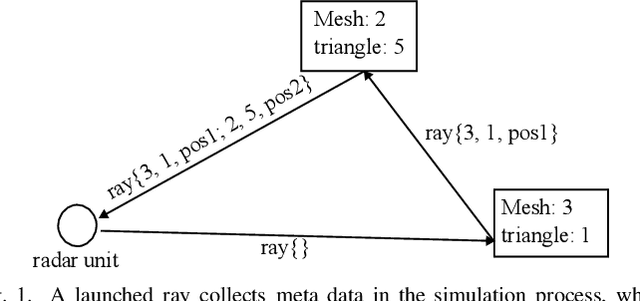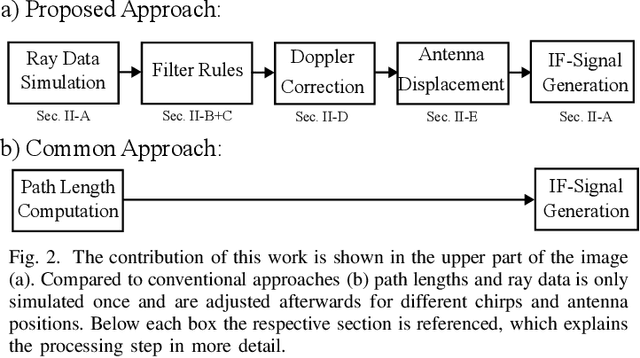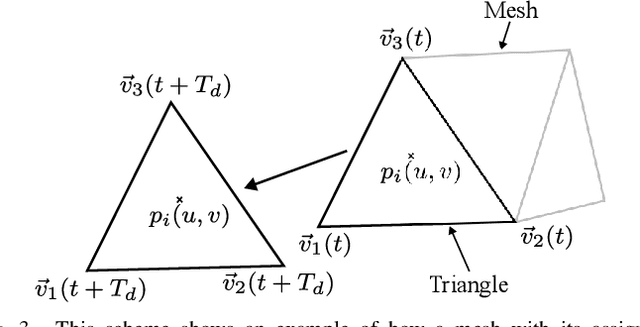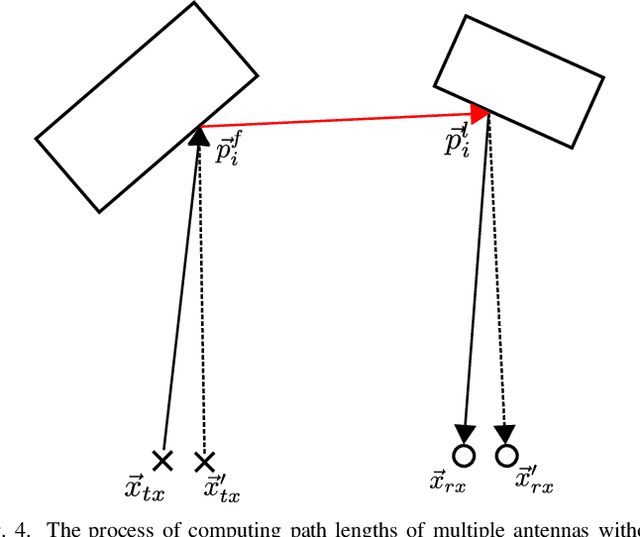Achieving Efficient and Realistic Full-Radar Simulations and Automatic Data Annotation by exploiting Ray Meta Data of a Radar Ray Tracing Simulator
Paper and Code
May 23, 2023



In this work a novel radar simulation concept is introduced that allows to simulate realistic radar data for Range, Doppler, and for arbitrary antenna positions in an efficient way. Further, it makes it possible to automatically annotate the simulated radar signal by allowing to decompose it into different parts. This approach allows not only almost perfect annotations possible, but also allows the annotation of exotic effects, such as multi-path effects or to label signal parts originating from different parts of an object. This is possible by adapting the computation process of a Monte Carlo shooting and bouncing rays (SBR) simulator. By considering the hits of each simulated ray, various meta data can be stored such as hit position, mesh pointer, object IDs, and many more. This collected meta data can then be utilized to predict the change of path lengths introduced by object motion to obtain Doppler information or to apply specific ray filter rules in order obtain radar signals that only fulfil specific conditions, such as multiple bounces or containing specific object IDs. Using this approach, perfect and otherwise almost impossible annotations schemes can be realized.
 Add to Chrome
Add to Chrome Add to Firefox
Add to Firefox Add to Edge
Add to Edge